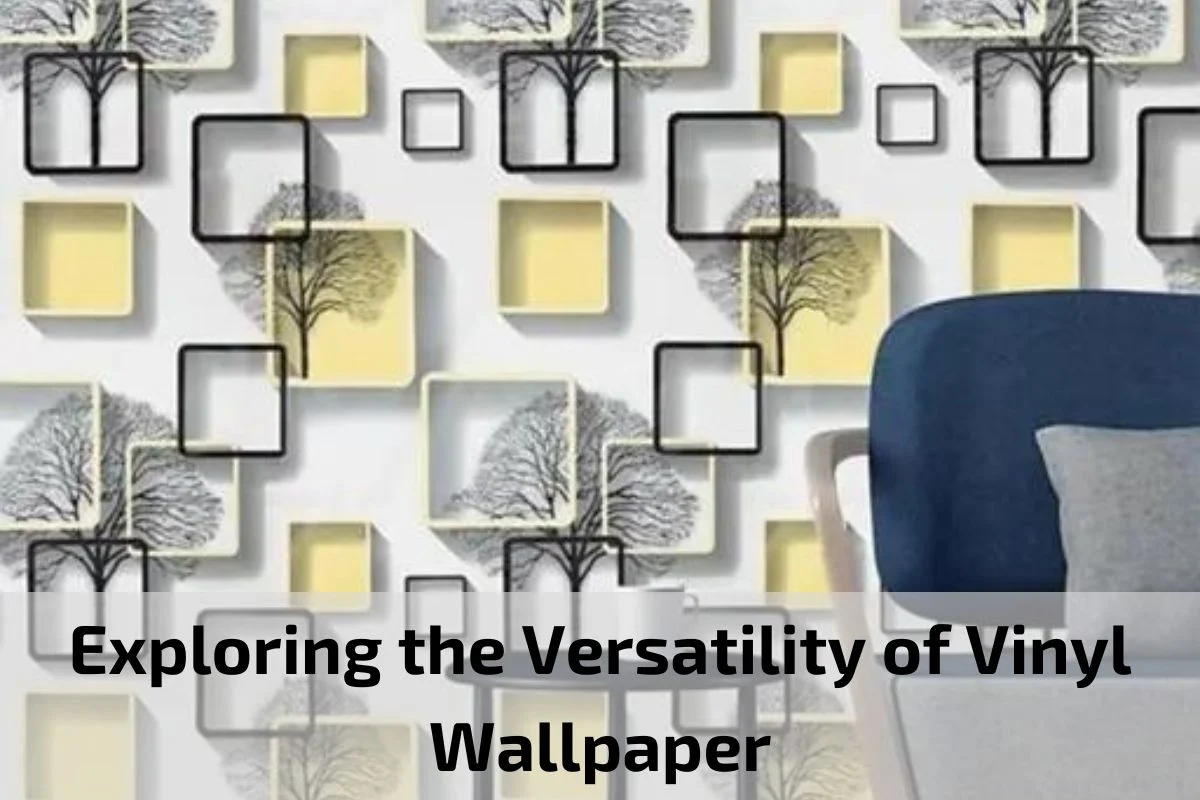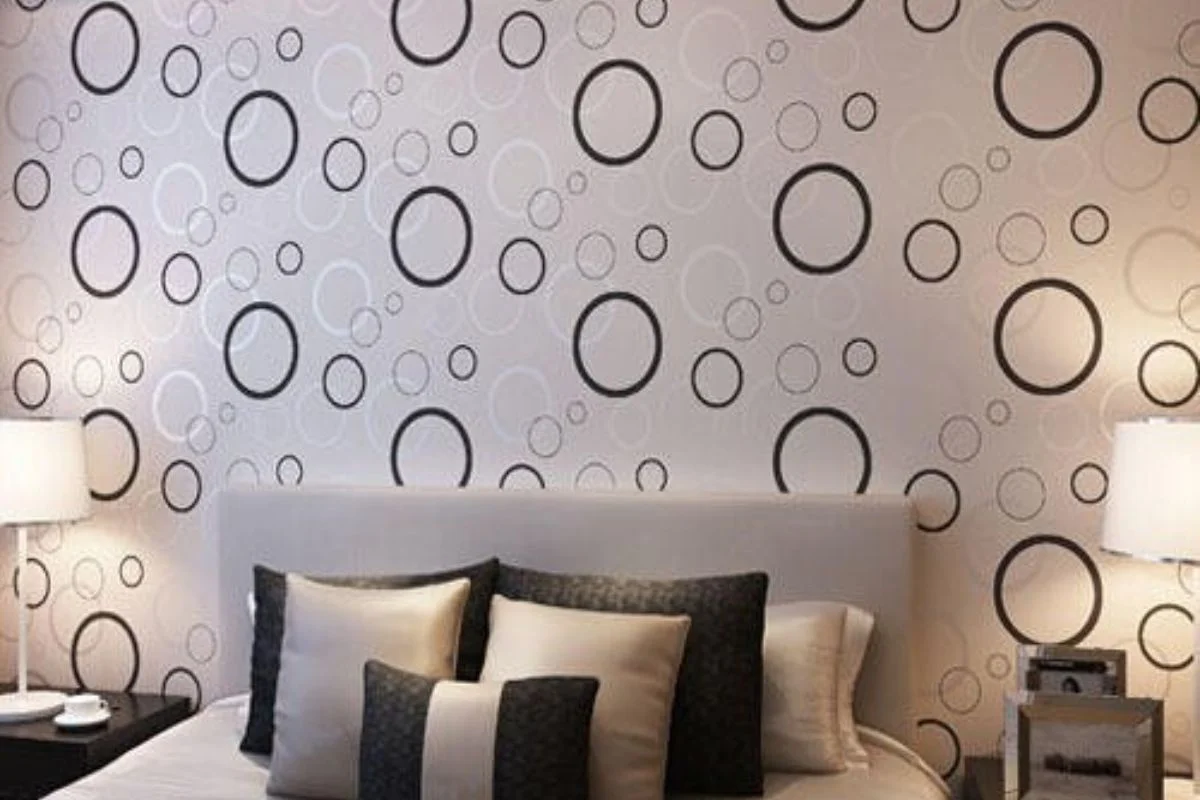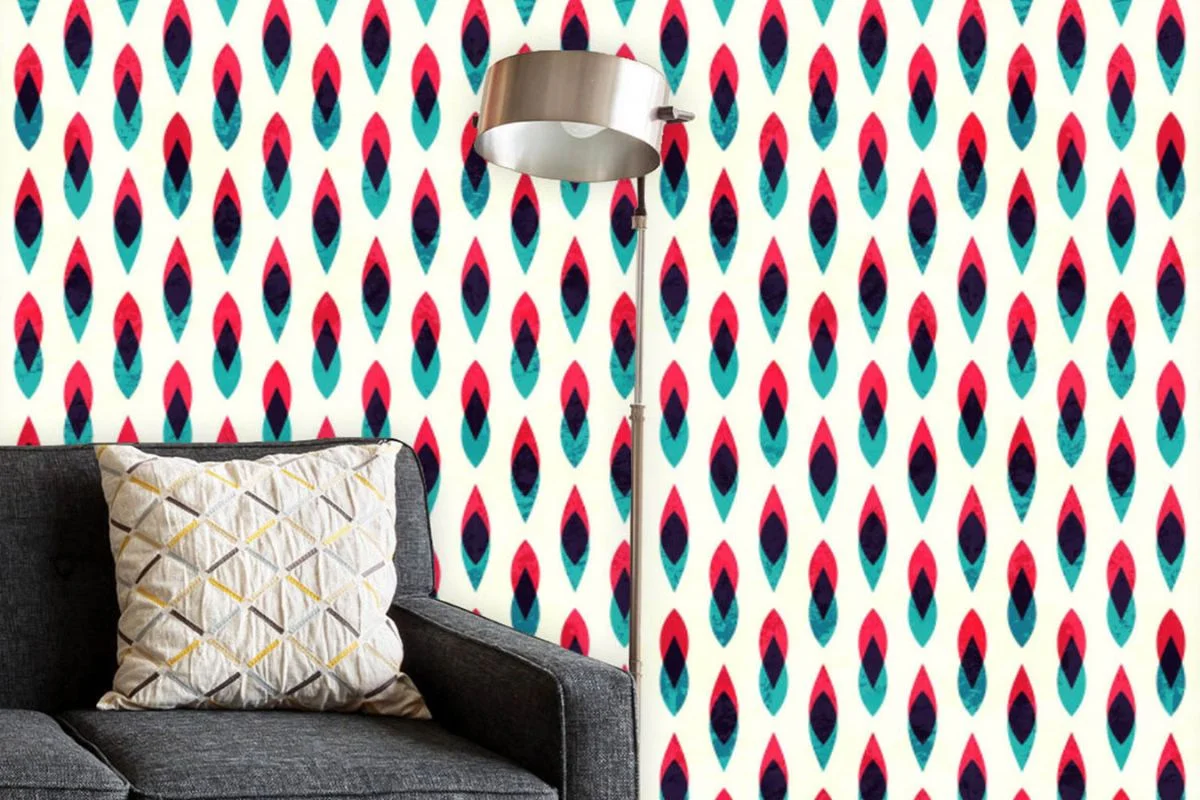
Vinyl wallpaper stands at the forefront of interior design innovation, offering a versatile and stylish solution for transforming any space. With its wide array of designs, patterns, and textures, vinyl wallpaper has become a staple in home decor, captivating homeowners, interior designers, and DIY enthusiasts alike.
In this exploration, we delve into the versatility of vinyl wallpaper, uncovering its endless possibilities for enhancing the aesthetic appeal of walls in homes, offices, and commercial spaces. From bold and vibrant patterns to subtle textures and faux finishes, vinyl wallpaper allows for endless creativity and personalization, making it a go-to choice for those seeking to make a statement with their interior design.
Join us as we embark on a journey to explore the diverse world of vinyl wallpaper, discovering its unique features, benefits, and applications. Whether you’re looking to add depth and dimension to a room or create a focal point with a striking accent wall, vinyl wallpaper offers endless opportunities to express your style and elevate your space.
Overview of Vinyl Wallpaper:
Vinyl wallpaper is a popular choice for interior decoration, known for its durability, versatility, and aesthetic appeal. It is made from a synthetic material called vinyl chloride, which is processed into sheets or rolls and printed with various designs, colors, and patterns. The vinyl coating not only gives the wallpaper its distinctive texture but also provides added protection against wear, tear, and moisture.
One of the primary advantages of vinyl wallpaper is its durability. It is highly resistant to damage from scratches, scuffs, and impacts, making it ideal for high-traffic areas such as hallways, entryways, and commercial spaces. Additionally, vinyl wallpaper is easy to clean and maintain, as its smooth surface can be wiped down with a damp cloth or sponge to remove dirt, stains, and smudges.
Vinyl wallpaper comes in a wide range of styles to suit different tastes and preferences. From classic designs like damask and floral patterns to contemporary motifs such as geometric shapes and abstract art, there is a vinyl wallpaper to complement any decor scheme. Furthermore, advancements in printing technology have allowed for the creation of textured and embossed vinyl wallpapers that mimic the look and feel of natural materials like wood, stone, and fabric.
Another notable feature of vinyl wallpaper is its water resistance, making it suitable for use in kitchens, bathrooms, and other humid environments. Unlike traditional paper-based wallpapers, vinyl wallpaper is impervious to moisture and will not warp, bubble, or peel when exposed to water or humidity.
In summary, vinyl wallpaper offers a winning combination of durability, versatility, and aesthetic appeal, making it a popular choice for homeowners, decorators, and commercial designers alike. Whether used to create a bold accent wall, add texture and dimension to a room, or simply enhance the beauty of a space, vinyl wallpaper is a versatile and practical option for interior decoration.
Definition and Composition of Vinyl Wallpaper
Vinyl wallpaper is a type of wallcovering made from synthetic materials, specifically vinyl chloride. This material is processed into sheets or rolls and then printed with various designs, colors, and patterns. The key component of vinyl wallpaper is the vinyl coating, which gives it its distinctive texture and appearance.
The composition of vinyl wallpaper typically includes several layers:
Base Material: The base material of vinyl wallpaper is often a paper or fabric substrate, which provides stability and support for the vinyl coating.
Vinyl Coating: The vinyl coating is applied to the surface of the base material and is responsible for the wallpaper’s durability and water resistance. It consists of a mixture of vinyl chloride resin, plasticizers, and other additives to enhance flexibility, strength, and adhesion.
Printed Design: Once the vinyl coating is applied, the wallpaper is printed with various designs, colors, and patterns using advanced printing techniques. These designs can range from traditional motifs like florals and damasks to modern geometric shapes and abstract art.
Protective Layer: Some vinyl wallpapers may feature an additional protective layer on top of the printed design to enhance durability and ease of cleaning. This protective layer may include a clear coating or laminate that adds shine and prevents damage from scratches and stains.
Importance of Choosing the Right Wallpaper for Interior Design
Selecting the right wallpaper for interior design is a crucial decision that can significantly impact the overall look and feel of a space. Here are several reasons highlighting the importance of choosing the right wallpaper:
Setting the Tone: Wallpaper serves as a backdrop for the entire room and sets the tone for the desired ambiance and atmosphere. Whether you aim for a cozy and intimate feel in a bedroom or a vibrant and energetic vibe in a living room, the right wallpaper can help achieve your desired aesthetic.
Enhancing Visual Appeal: The right wallpaper can enhance the visual appeal of a space by adding color, texture, and pattern. It can transform plain walls into focal points and create visual interest and depth, making the room more inviting and captivating.
Reflecting Personal Style: Wallpaper is a reflection of personal style and taste, allowing individuals to express themselves and infuse their personality into their living spaces. Whether you prefer classic elegance, modern sophistication, or eclectic whimsy, there is a wallpaper design to suit every preference.
Creating Cohesion: Choosing the right wallpaper helps create cohesion and unity within a room’s design scheme. It can tie together various elements such as furniture, decor, and architectural features, creating a harmonious and cohesive look that feels intentional and well-balanced.
Highlighting Architectural Features: Wallpaper can be used strategically to highlight and enhance architectural features such as alcoves, columns, or accent walls. By selecting the right wallpaper pattern and placement, you can draw attention to these features and make them stand out as focal points in the room.
Adding Texture and Depth: Textured wallpaper can add dimension and depth to a space, creating visual interest and tactile appeal. Whether it’s a subtle linen texture or a bold embossed pattern, textured wallpaper can make walls feel more dynamic and engaging.
Practical Considerations: Beyond aesthetics, choosing the right wallpaper also involves practical considerations such as durability, ease of maintenance, and suitability for the intended use. Factors such as washability, moisture resistance, and resistance to fading are important considerations, especially in high-traffic areas or rooms with specific environmental conditions.
Benefits of Vinyl Wallpaper
Vinyl wallpaper offers a multitude of benefits that make it a popular choice for interior decoration. Here are some of the key advantages:
Durability: One of the primary benefits of vinyl wallpaper is its durability. Vinyl is a robust material that is resistant to wear, tear, and damage from moisture, making it ideal for high-traffic areas such as hallways, kitchens, and bathrooms. Vinyl wallpaper is also less prone to fading, staining, and scratching compared to other types of wallpaper, ensuring that it maintains its appearance for years to come.
Versatility: Vinyl wallpaper comes in a wide range of colors, patterns, textures, and finishes, allowing for endless design possibilities. Whether you prefer classic designs like damask and floral patterns or modern motifs such as geometric shapes and abstract art, there is a vinyl wallpaper to suit every taste and style preference. Additionally, vinyl wallpaper can mimic the look and feel of other materials such as wood, stone, and fabric, providing a cost-effective alternative to more expensive options.
Easy Maintenance: Vinyl wallpaper is incredibly easy to clean and maintain, thanks to its smooth and washable surface. Unlike traditional paper-based wallpapers, which can be easily damaged by moisture and stains, vinyl wallpaper can be wiped down with a damp cloth or sponge to remove dirt, grease, and other residues. This makes vinyl wallpaper an excellent choice for busy households or commercial spaces where cleanliness is a priority.
Water Resistance: Vinyl wallpaper is inherently water-resistant, making it an ideal choice for areas with high humidity or moisture levels such as bathrooms, kitchens, and laundry rooms. Unlike paper-based wallpapers, which can warp, bubble, or peel when exposed to water, vinyl wallpaper maintains its integrity and appearance even in damp environments.
Easy Installation: Vinyl wallpaper is relatively easy to install, especially compared to other types of wallpaper such as grasscloth or fabric. Many vinyl wallpapers come pre-pasted or with peel-and-stick adhesive backing, eliminating the need for messy glues or adhesives. Additionally, vinyl wallpaper is forgiving and can be repositioned or adjusted during installation, making it a suitable option for DIY enthusiasts.
Cost-Effectiveness: Vinyl wallpaper offers excellent value for money, providing a durable and stylish wallcovering option at an affordable price point. Compared to other wall treatments such as paint or tile, vinyl wallpaper is often more cost-effective and offers long-term savings due to its durability and low maintenance requirements.
Creative Uses of Vinyl Wallpaper in Interior Design
Vinyl wallpaper is not just a practical wallcovering option; it also offers endless opportunities for creativity and innovation in interior design. Here are some creative ways to use vinyl wallpaper to enhance your space:
Statement Walls: Create a bold statement by covering an entire wall with vinyl wallpaper featuring a vibrant pattern, bold color, or eye-catching design. This can serve as a focal point in the room and add drama and visual interest to the space.
Ceiling Treatments: Extend the impact of vinyl wallpaper beyond the walls by using it to cover the ceiling. Choose a subtle texture or a whimsical pattern to add depth and dimension to overhead spaces and create a unique and unexpected focal point.
Room Dividers: Use vinyl wallpaper to create partitions or room dividers in open-plan living areas. Install floor-to-ceiling panels of vinyl wallpaper on freestanding screens or sliding doors to add privacy, define separate zones, and introduce decorative elements into the space.
Furniture Accents: Transform ordinary furniture pieces into statement pieces by applying vinyl wallpaper to their surfaces. Whether it’s a dresser, cabinet, or tabletop, vinyl wallpaper can add color, texture, and personality to furniture, giving it a custom look and feel.
Backsplashes: Install vinyl wallpaper as a backsplash in kitchens or bathrooms to add personality and style to the space. Choose a water-resistant vinyl wallpaper with a sleek finish to protect against splashes and spills while adding visual interest to the walls.
Stair Risers: Add a touch of whimsy to staircase design by applying vinyl wallpaper to the risers. Choose a pattern or design that complements the overall decor scheme and enhances the visual appeal of the staircase as a focal point in the home.
Door Makeovers: Give plain doors a makeover by covering them with vinyl wallpaper. Whether it’s a closet door, pantry door, or interior door, vinyl wallpaper can add color, pattern, and texture to doors, turning them into decorative elements that enhance the overall design of the space.
Niche Decor: Use vinyl wallpaper to decorate recessed niches or alcoves in walls. Choose a coordinating pattern or color to highlight these architectural features and create visual interest in the room.
Custom Wall Art: Get creative with vinyl wallpaper by using it to create custom wall art or murals. Cut out shapes, letters, or motifs from vinyl wallpaper and arrange them on the wall to create unique and personalized designs that reflect your style and personality.
Temporary Decor Updates: Use removable vinyl wallpaper to temporarily update the decor of a space. Whether it’s for seasonal decorations, special occasions, or temporary living situations, removable vinyl wallpaper offers a versatile and convenient option for changing up the look of a room without the commitment of permanent wallpaper installation.
Maintenance and Care for Vinyl Wallpaper
Vinyl wallpaper is known for its durability and easy maintenance, but proper care is essential to ensure that it retains its beauty and longevity over time. Here are some maintenance and care tips to keep your vinyl wallpaper looking fresh and vibrant:
Regular Cleaning: To prevent dust and dirt buildup, regularly dust or vacuum your vinyl wallpaper using a soft brush attachment or a gentle vacuum setting. This helps maintain the wallpaper’s appearance and prevents it from looking dull or dingy over time.
Spot Cleaning: For small stains or marks, gently spot clean the affected area using a mild detergent solution and a soft cloth or sponge. Avoid using abrasive cleaners or harsh chemicals, as they can damage the wallpaper’s surface and finish.
Test First: Before cleaning the entire wallpaper surface, test the cleaning solution on a small, inconspicuous area to ensure that it does not cause any damage or discoloration. This allows you to assess the suitability of the cleaning method without risking damage to the entire wallpaper.
Avoid Excessive Moisture: While vinyl wallpaper is water-resistant, excessive moisture can still damage its adhesive and cause the wallpaper to peel or warp. Avoid using excessive moisture when cleaning the wallpaper, and promptly wipe up any spills or splashes to prevent water damage.
Use a Gentle Touch: When cleaning vinyl wallpaper, use a gentle touch to avoid damaging the surface or causing scratches. Avoid scrubbing too vigorously, as this can remove the wallpaper’s protective coating and expose it to potential damage.
Repair Minor Damage: If you notice any tears, punctures, or loose seams in the wallpaper, repair them promptly to prevent further damage. Use a small amount of vinyl wallpaper adhesive to reattach loose seams or tears, and smooth out any wrinkles or bubbles with a wallpaper roller or smoothing tool.
Avoid Direct Sunlight: Direct sunlight can cause vinyl wallpaper to fade or discolor over time, so it’s essential to minimize exposure to sunlight where possible. Use window treatments such as blinds or curtains to protect the wallpaper from prolonged exposure to sunlight.
Long-Term Maintenance: To maintain the wallpaper’s appearance and durability in the long term, periodically inspect it for signs of wear, tear, or damage. Address any issues promptly to prevent them from worsening and compromising the integrity of the wallpaper.
Conclusion
In conclusion, maintaining and caring for vinyl wallpaper is essential to preserve its beauty and longevity over time. By following the recommended maintenance tips, such as regular cleaning, spot cleaning, and avoiding excessive moisture, you can ensure that your vinyl wallpaper remains in top condition for years to come.




